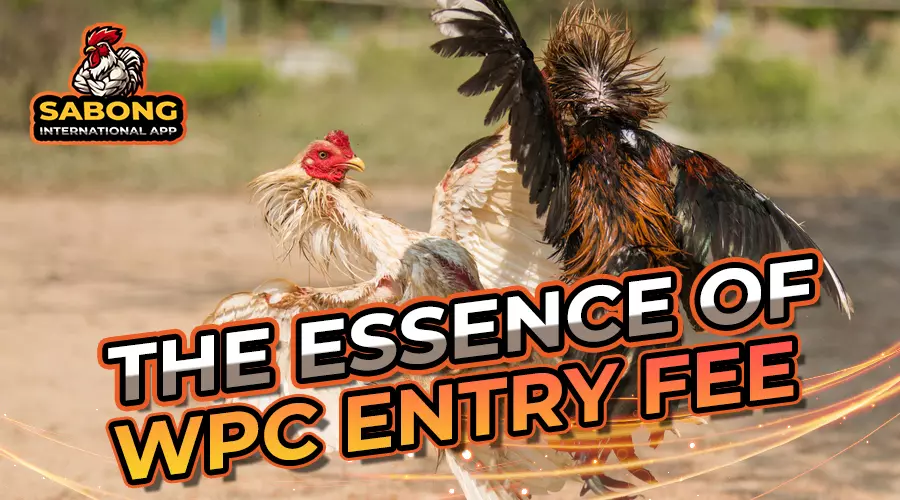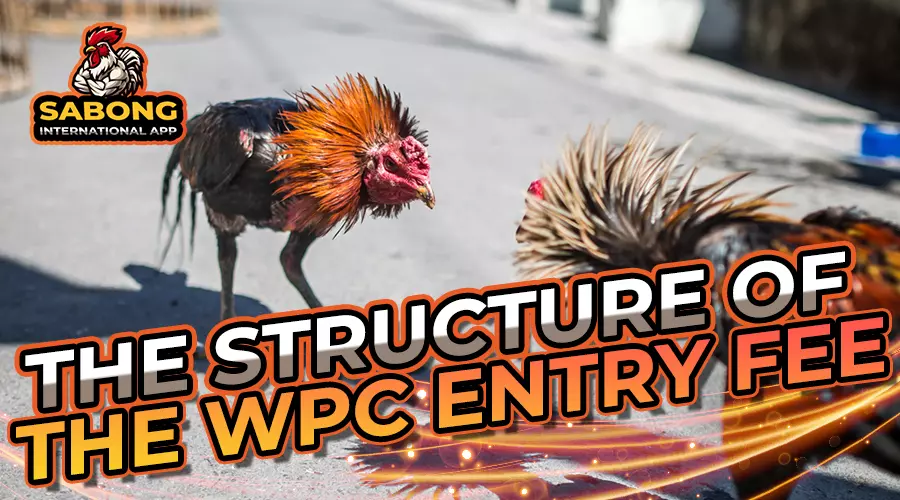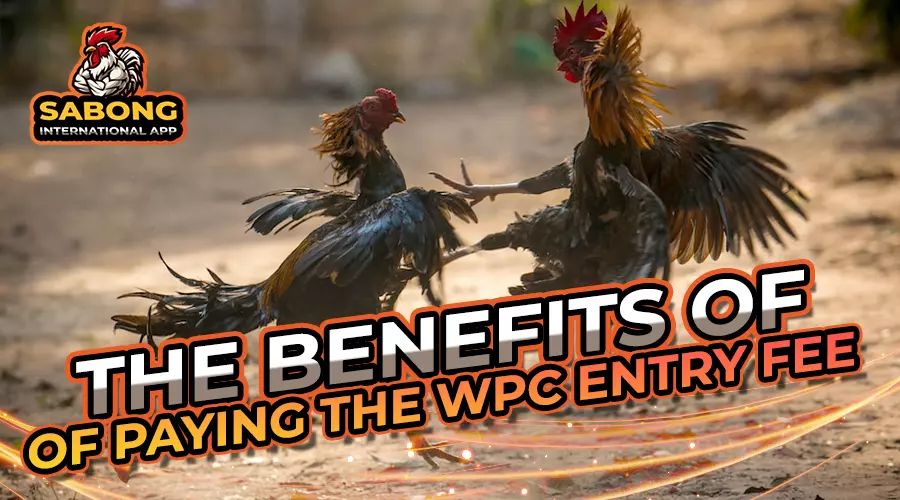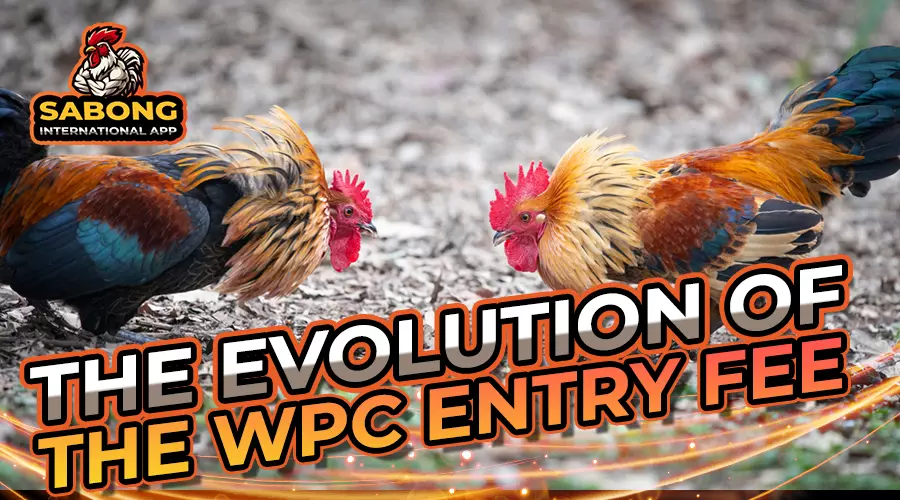Unveiling the world of competitive cockfighting, the World Pitmasters Cup (WPC) is a prestigious platform where skilled breeders and enthusiasts showcase their prowess. However, as the anticipation builds and the crowds gather, one crucial aspect that captures the attention of participants and spectators alike is the WPC Entry Fee.
In this article, we study the complexities of the entry fee, shedding light on its significance, factors influencing the cost, and the underlying reasons behind its structure. Whether you are a seasoned sabong enthusiast or a curious newcomer, this in-depth exploration of the WPC Entry Fee will equip you with valuable insights to navigate the fascinating world of competitive cockfighting. So, stay tuned to the Sabong International platform and join us on this captivating journey.
The Essence of WPC Entry Fee
The WPC Entry Fee goes beyond a simple monetary requirement; it is a crucial element that sustains the infrastructure and operations of competitive cockfighting tournaments. Organizing and hosting these events would be financially sustainable with the entry fees. The fees collected help cover various expenses, such as venue rental, staff salaries, gamefowl logistics, administrative costs, and prize pools. By participating in the tournaments and paying the entry fee, breeders and enthusiasts contribute to the continued existence and growth of the sabong community.
Factors Influencing the WPC Entry Fee
Several factors influence the cost of participating in the WPC Sabong. These factors include:
Quality of Gamefowl: The breed and quality of gamefowl used in the tournaments significantly impact the entry fee. High-quality gamefowl from reputable breeders command higher prices, resulting in a more expensive entry fee.
Prestige and Prizes: The importance associated with the WPC Sabong and the prize pools available also play a role in determining the entry fee. Tournaments with higher stakes and larger prizes may have higher entry fees to attract top-level breeders and competitors.
Venue and Infrastructure: The choice of venue and the quality of infrastructure influence the entry fee. Larger venues with better facilities and amenities generally come with higher rental costs, which can increase the overall entry fee.
Regulatory Compliance and Insurance: Compliance with legal and regulatory requirements, including licenses and insurance, adds to the expenses of hosting sabong tournaments. However, these costs are often factored into the entry fee to ensure proper adherence to regulations and the safety and security of participants and spectators.
Understanding the Structure of the WPC Entry Fee
The WPC Entry Fee typically comprises various components comprising the total participation cost. These components may include:
Registration Fees: A base fee paid by participants to secure their entry into the tournament.
Accommodation Charges: If the tournament requires participants to stay at designated accommodations, additional charges may be included to cover lodging expenses.
Administrative Costs: Costs associated with organizing and managing the tournament, such as staff salaries, paperwork, logistics, and other operational expenses.
Supplementary Expenses: Miscellaneous expenses may arise during the tournament, such as medical services, veterinary care, security measures, and event promotion.
Understanding the breakdown of the entry fee structure allows participants to have transparency and clarity regarding where their contributions are allocated.
Evaluating the Benefits of Paying the WPC Entry Fee
Paying the WPC Entry Fee has several benefits for individual participants and the overall development of the sport. These benefits include:
Fair Competition and Standardization: The entry fee helps ensure that participants are serious and committed to the sport. It acts as a filtering mechanism, ensuring that only dedicated breeders and competitors participate in the tournaments. This commitment to quality and standards enhances the overall competition level and raises WPC Sabong’s prestige.
Financial Sustainability and Prize Pool: The entry fees contribute to the financial sustainability of the tournaments. They cover various expenses, including venue rental, logistics, staff salaries, and prize pools. In addition, a portion of the entry fees is allocated to the prize pool, attracting top-level breeders and competitors, ultimately elevating the event’s competitive spirit and overall excitement.
Supporting the Growth of the Sport: The funds generated from the entry fees are reinvested into the development and promotion of sabong. They help support initiatives such as breeding programs, education, awareness campaigns, and infrastructure improvements. In addition, by keeping the sport’s growth, the entry fees contribute to expanding the reach of sabong, attracting new participants, and fostering a sense of community among breeders and enthusiasts.
Ensuring Compliance and Integrity: The collection of entry fees enables organizers to implement necessary regulatory compliance measures, such as obtaining licenses and insurance coverage. These measures ensure that the tournaments are conducted legally and transparently, promoting fairness, integrity, and the welfare of participants and gamefowl.
Participant Perspectives: Balancing Cost and Passion
Participants in WPC Sabong tournaments face the challenge of balancing the cost of the entry fee with their passion for the sport. Many breeders and enthusiasts consider sabong more than a hobby—it is a way of life. So, while the entry fees may be a significant financial commitment, participants often view it as an investment in their passion, their gamefowl, and the opportunity to showcase their skills on a grand stage.
For participants, their emotional connection with their gamefowl and the thrill of competitive sabong often outweigh the financial considerations. In addition, they understand that the entry fee contributes to the overall quality of the tournaments and helps maintain the standards and prestige of the sport. Through strategic financial management, seeking sponsorships, and optimizing resources, participants navigate the financial aspect of the entry fee while remaining dedicated to their love for sabong.
The Evolution of the WPC Entry Fee
The WPC Entry Fee has evolved, reflecting the changing landscape of competitive cockfighting. Initially, entry fees were relatively lower, with tournaments primarily focused on local or regional participation. As the popularity of WPC Sabong grew and its reputation as a prestigious platform solidified, the entry fees increased to accommodate the rising costs associated with organizing more significant and high-profile events.
The evolution of the entry fee has also been influenced by market dynamics, such as the demand for quality gamefowl and the willingness of participants to invest in their breeding and training programs. However, the goal has always been to strike a balance between ensuring the financial sustainability of the tournaments and keeping the entry fees accessible to a wide range of breeders and enthusiasts.
Tips for Managing WPC Entry Fee
For participants who are mindful of their budget and seeking ways to manage the WPC Entry Fee effectively, here are some practical tips:
Plan and Budget: Create a comprehensive budget that accounts for all the expenses related to the tournament, including the entry fee, transportation, accommodation, and other associated costs. It will help you clearly understand your financial obligations and enable you to allocate funds accordingly.
Seek Sponsorships: Explore sponsorship opportunities within your local community or among fellow sabong enthusiasts. Sponsors can provide financial support or in-kind contributions, helping to offset some of the expenses associated with the entry fee.
Build Relationships: Cultivate relationships with other breeders and enthusiasts within the sabong community. Collaborating and sharing resources can help reduce costs and create a support system within the sport.
Optimize Resources: Look for ways to optimize your resources and minimize unnecessary expenses. It could include efficient gamefowl management practices, cost-effective transportation arrangements, and a careful selection of accommodation options.
Conclusion
In conclusion, the WPC Entry Fee is vital in sustaining the competitive cockfighting industry. It ensures the financial viability of the tournaments, supports the sport’s growth, and maintains the standards of fair competition and integrity. While managing the entry fee can be challenging, participants understand the value it brings to the sport and are willing to invest in their passion for sabong. As a reader and sabong enthusiast, embracing the thrill and excitement of WPC Sabong is an invitation to immerse yourself in a rich tradition and a vibrant community. Stay tuned to the Sabong International platform for the latest updates, engaging content, and valuable insights into competitive cockfighting.




